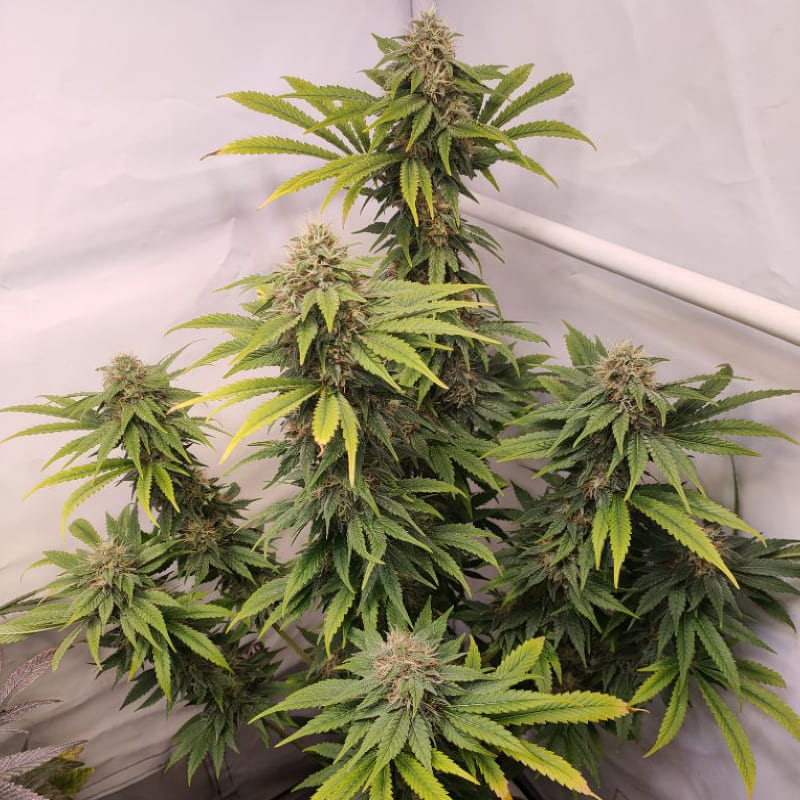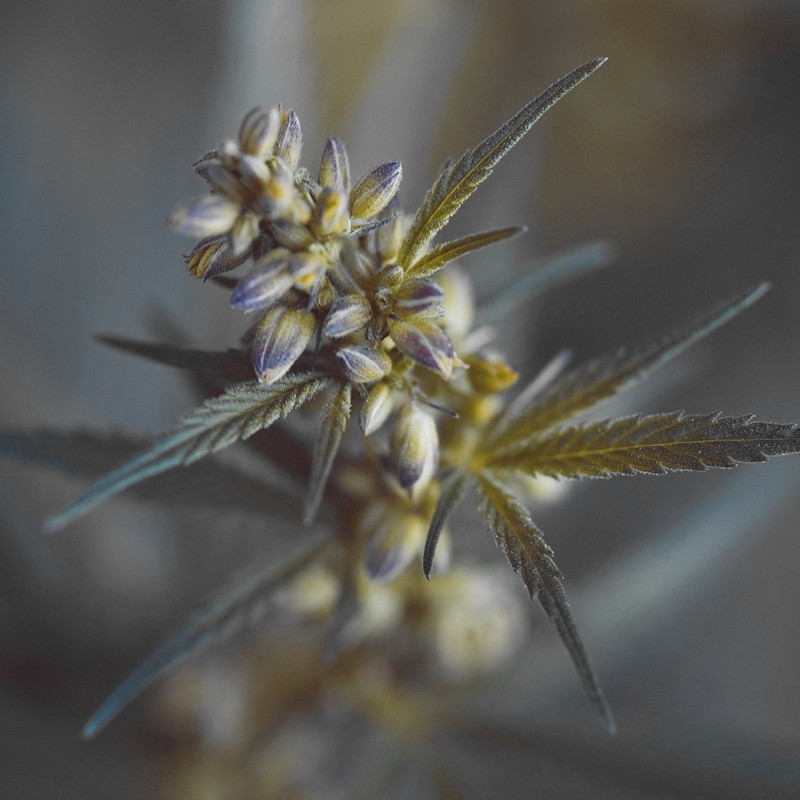What is a female cannabis plant?
Basically, almost every ambitious gardener is looking for female hemp plants with the highest possible yield. These are particularly suitable for the production of the coveted flowers (also known as "buds"). These flowers contain high concentrations of cannabinoids such as THC (tetrahydrocannabinol) and CBD (cannabidiol) as well as other secondary ingredients such as terpenes. By the way, the cultivation of seedless individuals is called sinsemilla - feminized seeds are best suited for the production of sinsemilla, which can be purchased here at the auction house.

Characteristics of the female cannabis plant
Here are some of the typical characteristics by which you can recognize a female cannabis plant:
1. pestles (hairy structures)
In the early flowering phase, female plants begin to develop fine, hair-like structures (pestles) on the leaf nodes. These are initially white and later, at maturity, often turn reddish or orange. They serve to collect the pollen if pollination occurs.
2. flowering
During the flowering period, dense, resin-rich inflorescences (buds) form, which are usually well-developed and compact. These buds contain the highest concentrations of cannabinoids such as THC and CBD and are the main reason why female plants are specifically cultivated
3. trichomes
Female cannabis plants develop a large number of trichomes, which are small resin glands located mainly on the flowers and to a lesser extent on the leaves. These trichomes give the flowers their characteristic glistening appearance and are also responsible for the flavor and aroma of the plant
4. absence of pollen sacs
In contrast to male plants, which form pollen sacs (staminates), female plants do not have round, spherical structures. Instead, they only form pistils and flowers, which is an important distinguishing feature.
5 Purpose of cultivation
Since only female plants develop the coveted cannabinoid-rich flowers, male plants are usually removed early (removal of "males") to avoid pollination. If a female plant is pollinated, it develops seeds, which can affect the quality of the flowers (so-called "sinsemilla"). As already mentioned, high-quality feminized cannabis seeds are suitable for this type of cultivation in order to harvest the best and most potent cannabis.
6. time of sex determination
Although male and female plants look similar during the vegetative phase, from the so-called pre-flowering phase (usually after around 4-6 weeks) the sexes can be distinguished on the basis of the above-mentioned characteristics.
These characteristics help growers to distinguish between female and male plants in order to selectively cultivate those that are used for the production of high-yielding flowers. By the way: if your grow box is relatively small, you should definitely opt for feminized cannabis seeds when buying seeds...

The male hemp plant
A male hemp plant is a specimen of the Cannabis sativa species that differs significantly from female specimens in terms of its characteristics and functions. While the female plant is valued above all for the production of resin-rich flowers, the male plant plays a central role in reproduction and breeding.
Characteristics of the male plant
Male cannabis plants have some characteristic features compared to female plants. Here are the most important ones:
1. pollen sacs (staminates)
Instead of pestle-producing structures, male plants develop small, spherical pollen sacs. These pouches appear on the leaf nodes in the pre-flowering phase and mature into pollen producers that release the pollen when opened.
2. fewer or no resin glands (trichomes)
In contrast to female plants, which are rich in resin and cannabinoids, male plants produce significantly fewer trichomes. As a result, they are generally less suitable for the production of medicinal or recreational flowers.
3. growth habit
Male plants often tend to grow longer, slimmer and less bushy. They concentrate their energy mainly on the development of pollen sacs rather than on the formation of large inflorescences.
4. function in breeding
Despite their lesser use for consumption, male plants play an essential role in breeding, as they are needed to pollinate feminine plants to produce seeds. However, in crops where "sinsemilla" is preferred, male plants are often removed early to avoid unwanted pollination.
5. sex identification in the pre-flowering phase
Even in the early flowering phase, growers can determine whether the plants are male by looking at the pollen sacs. While female plants form fine, hair-like pistils, these pollen sacs are clearly recognizable on male plants.
Cannabis Sativa as a whole
Overall, hemp is one of the most versatile and oldest cultivated plants in human history. It belongs to the Cannabaceae family and is used in many different areas, from textile and paper production to food, medicine and industrial applications. Its long history of use can be traced back to ancient civilizations, where hemp was valued above all as a raw material for ropes, fabrics and paper.
Botanically, it is characterized by a characteristic, hand-shaped leaf structure consisting of several finger-like segments. Depending on the variety and growing conditions, the plant can vary in height and shape - it can be cultivated either as an annual or biennial and often reaches several meters in height. During the vegetative growth phase, it forms dense foliage, which turns into resin-rich inflorescences in the later flowering period, especially in female plants.
In addition to its industrial and nutritional uses, cannabis also plays an important role in medicine. CBD-containing strains are increasingly being researched and used to treat various ailments, such as pain or inflammation. At the same time, it should be noted that psychoactive varieties with a higher THC content are used for medical or recreational purposes in some countries, but are subject to strict legal regulations.
Another advantage of hemp cultivation lies in its ecological properties. Hemp requires comparatively few pesticides and herbicides and can be grown in different climate zones. The plant also binds large amounts of carbon dioxide as it grows, making it a valuable contribution to the fight against climate change.
It is definitely a remarkably versatile crop that impresses with its many uses in industry, medicine and nutrition. Its adaptability, broad chemical diversity and positive ecological properties make it one of the most important resources for a sustainable future.